The host cell sulfonation pathway contributes to retroviral infection at a step coincident with provirus establishment
- PMID: 19008949
- PMCID: PMC2576444
- DOI: 10.1371/journal.ppat.1000207
The host cell sulfonation pathway contributes to retroviral infection at a step coincident with provirus establishment
Abstract
The early steps of retrovirus replication leading up to provirus establishment are highly dependent on cellular processes and represent a time when the virus is particularly vulnerable to antivirals and host defense mechanisms. However, the roles played by cellular factors are only partially understood. To identify cellular processes that participate in these critical steps, we employed a high volume screening of insertionally mutagenized somatic cells using a murine leukemia virus (MLV) vector. This approach identified a role for 3'-phosphoadenosine 5'-phosphosulfate synthase 1 (PAPSS1), one of two enzymes that synthesize PAPS, the high energy sulfate donor used in all sulfonation reactions catalyzed by cellular sulfotransferases. The role of the cellular sulfonation pathway was confirmed using chemical inhibitors of PAPS synthases and cellular sulfotransferases. The requirement for sulfonation was mapped to a stage during or shortly after MLV provirus establishment and influenced subsequent gene expression from the viral long terminal repeat (LTR) promoter. Infection of cells by an HIV vector was also shown to be highly dependent on the cellular sulfonation pathway. These studies have uncovered a heretofore unknown regulatory step of retroviral replication, have defined a new biological function for sulfonation in nuclear gene expression, and provide a potentially valuable new target for HIV/AIDS therapy.
Conflict of interest statement
The authors have declared that no competing interests exist.
Figures
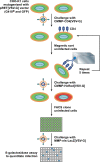
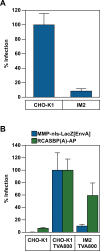

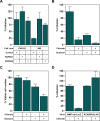
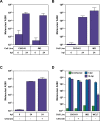
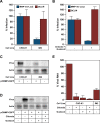
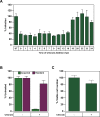

Similar articles
-
Human 3'-phosphoadenosine 5'-phosphosulfate (PAPS) synthase: biochemistry, molecular biology and genetic deficiency.IUBMB Life. 2003 Jan;55(1):1-11. doi: 10.1080/1521654031000072148. IUBMB Life. 2003. PMID: 12716056 Review.
-
Proviruses with Long-Term Stable Expression Accumulate in Transcriptionally Active Chromatin Close to the Gene Regulatory Elements: Comparison of ASLV-, HIV- and MLV-Derived Vectors.Viruses. 2018 Mar 8;10(3):116. doi: 10.3390/v10030116. Viruses. 2018. PMID: 29517993 Free PMC article.
-
Regulation of murine hepatic hydroxysteroid sulfotransferase expression in hyposulfatemic mice and in a cell model of 3'-phosphoadenosine-5'-phosphosulfate deficiency.Drug Metab Dispos. 2013 Aug;41(8):1505-13. doi: 10.1124/dmd.113.051912. Epub 2013 May 14. Drug Metab Dispos. 2013. PMID: 23674610 Free PMC article.
-
Nuclear localization of PAPS synthetase 1: a sulfate activation pathway in the nucleus of eukaryotic cells.FASEB J. 2000 Feb;14(2):345-54. doi: 10.1096/fasebj.14.2.345. FASEB J. 2000. PMID: 10657990
-
Sulfation and sulfotransferases 5: the importance of 3'-phosphoadenosine 5'-phosphosulfate (PAPS) in the regulation of sulfation.FASEB J. 1997 May;11(6):404-18. doi: 10.1096/fasebj.11.6.9194521. FASEB J. 1997. PMID: 9194521 Review.
Cited by
-
ZASC1 stimulates HIV-1 transcription elongation by recruiting P-TEFb and TAT to the LTR promoter.PLoS Pathog. 2013 Oct;9(10):e1003712. doi: 10.1371/journal.ppat.1003712. Epub 2013 Oct 24. PLoS Pathog. 2013. PMID: 24204263 Free PMC article.
-
CHD1 and CHD2 are positive regulators of HIV-1 gene expression.Virol J. 2014 Oct 8;11:180. doi: 10.1186/1743-422X-11-180. Virol J. 2014. PMID: 25297984 Free PMC article.
-
Cellular transcription factor ZASC1 regulates murine leukemia virus transcription.J Virol. 2010 Aug;84(15):7473-83. doi: 10.1128/JVI.00299-10. Epub 2010 May 19. J Virol. 2010. PMID: 20484494 Free PMC article.
-
3'-Phosphoadenosine 5'-phosphosulfate (PAPS) synthases, naturally fragile enzymes specifically stabilized by nucleotide binding.J Biol Chem. 2012 May 18;287(21):17645-17655. doi: 10.1074/jbc.M111.325498. Epub 2012 Mar 26. J Biol Chem. 2012. PMID: 22451673 Free PMC article.
-
ZBTB2 represses HIV-1 transcription and is regulated by HIV-1 Vpr and cellular DNA damage responses.PLoS Pathog. 2021 Feb 26;17(2):e1009364. doi: 10.1371/journal.ppat.1009364. eCollection 2021 Feb. PLoS Pathog. 2021. PMID: 33635925 Free PMC article.
References
Publication types
MeSH terms
Substances
Grants and funding
LinkOut - more resources
Full Text Sources
Other Literature Sources
Miscellaneous

